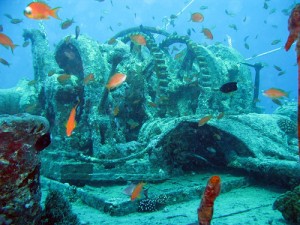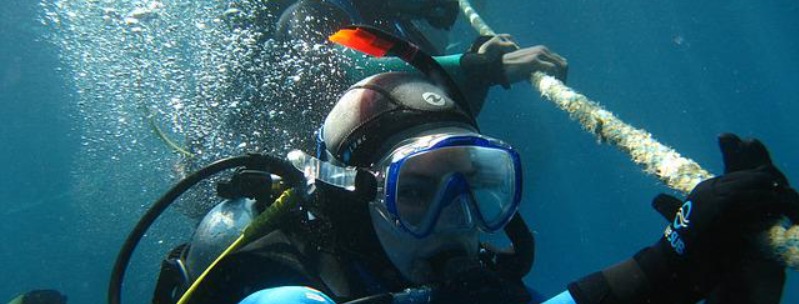Scuba Diving Destinations in Egypt
For most people, Egypt’s main draw is its historical attractions—The Great Pyramids & Sphinx of Giza, Karnak at Luxor, and The Valley of Kings. But if you want to plan a truly unique adventure in Egypt, plan to go diving in The Red Sea. Home to more than 1,000 species of invertebrates and over 200 species of soft and hard coral, The Red Sea boasts several remarkable diving spots. Use this guide to learn about the best diving spots—and what you should know before you go.
Best Diving Spots
Probably the best known dive area for tourists, Sharm el Sheikh is located in the northern region of The Red Sea. There, you’ll find a selection of diving spots, from the four coral reefs of the Straits of Tiran—Gordon, Woodhouse, Thomas, and Jackson—to the wreckages of the 19th century SS Dunraven and the World War II Thistlegorm cargo vessel. Ras Mohammed National Park in Sinai is another top spot for divers, featuring very deep waters and some of the most varied collections of coral and fish species.

Halfway out, you’ll find the Brothers Islands—Big Brother and Little Brother—one of the best spots to see hammerhead sharks in the Red Sea. The Big Brother island is also the site of the 1957 Aida wreckage, a great dive for advanced and tech divers. Another interesting wreck dive is located at the Shark and Yolanda Reef, where you’ll see the bizarre combination of toilets and bathroom fittings alongside tuna, barracuda, and scorpion fish.
Diving for Thistlegorm
The Thistlegorm is a popular stop for liveaboards and is only 3-4 hours away for day trips. It sees approximately 200 divers per day. However, her popularity has been her undoing, with damage from poor buoyancy, looting, mooring lines, and divers’ bubbles all contributing to her rapid demise. Fortunately, interventions by the HEPCA, CDWS, Save the SS Thistlegorm, and others are encouraging wreck conservation, and the Thistlegorm’s history may be preserved for another 80 years.
Diving Ras Mohammed National Park
The sites are best dived as a drift, beginning at Shark Reef and ending at Yolanda Reef. These are two twin mountain-like peaks rising from a sandy sea bed deep beneath the surface. Beyond Yolanda Reef, there is a relatively small reef called Satellite Reef, which you can explore all over depending on the severity of the current. Finish your dive just above wreckage of the ‘Yolanda,’ which found its final resting place on this reef in the 1970s. Its cargo of British standard toilets, bath tubs, and pipe tubes remains on the shallow reef indefinitely.
Brother Islands Diving
The Brother Islands are a well-known scuba diving destination around the world. It has some of Egypt’s and the Red Sea’s best diving. These two small islands (Little Brother and Big Brother) are well-known for their beautiful pristine coral and for being one of the top locations in Egypt to dive with sharks.
When To Go
Diving is a year-round activity in the Red Sea, but the waters can get chilly in winter, falling to around 22°C. On the other end of the spectrum, waters can reach a bath-like 28°C in June through August, with outside air temperatures spiking up to 30°C-45°C. Plan to wear full-length exposure suits in the wintertime months, and a 3mm shortie or long exposure suit in the summer months.
Important Safety Considerations
Staying safe is an important component to travel, so make sure you check the British Foreign & Commonwealth Office (FCO) website for the latest updates on travel to Egypt. Right now, the FCO advises against travel outside the resort areas of South Sinai due to hijacks, kidnaps, and other terrorist activity in the region. You should carry a photographic ID with you at all times and avoid all demonstrations and gatherings to protect your safety.

Diving requires extra safety precautions as well. Purchase a specialty travel insurance that covers adventure tourism activities like diving before you depart, keeping in mind that diving beyond the depth limit of your policy will invalidate your cover to make an accident or brain injury claim should something go wrong. At the same time, don’t dive in areas that are too shallow, either. Steer clear of the popular but dangerous Blue Hole (Dahab), which is only 130-metres deep and has been the site of many diving accidents and fatalities. It’s better to be safe than sorry.
